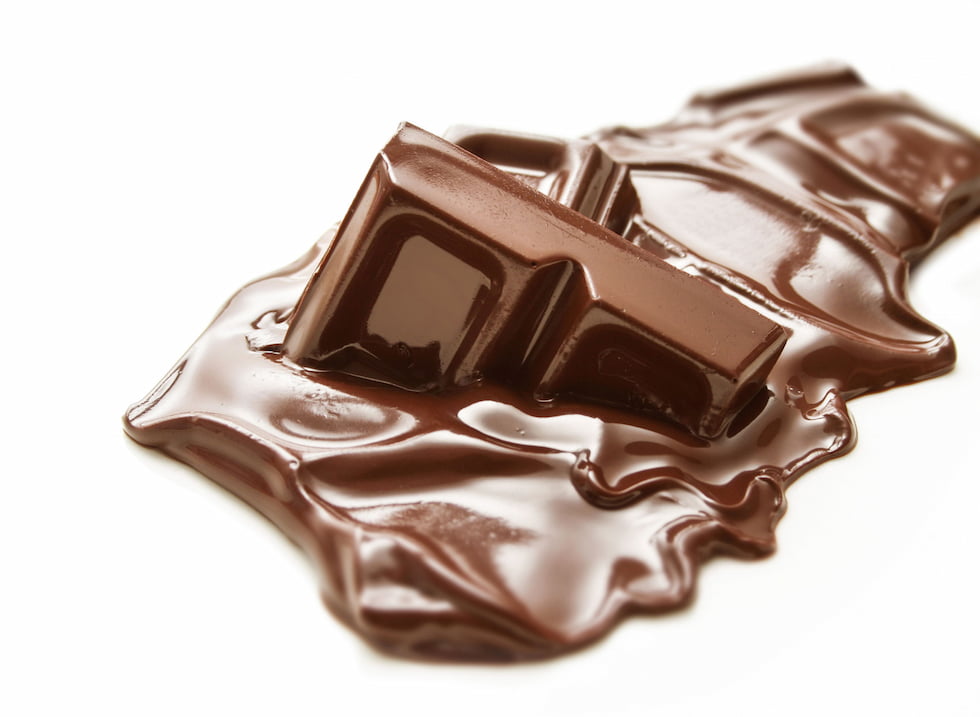
Chocolate, though delicious, is a pain in the neck to pump. It is shear sensitive, viscous, solidifies when cool and also requires special attention to hygiene (as it is used for human consumption). If a user is building a new system or troubleshooting an existing one for chocolate transfer, there are a few common pitfalls to avoid when it comes to pumping this sweet confection.
1. Getting Burned
To avoid burning the chocolate, it is critical to keep the cocoa butter in the chocolate as a homogeneous mixture. Chocolate is shear sensitive, and cocoa butter and cocoa solids can easily separate if pumped at high speeds. For this reason, centrifugal pumps are generally a poor choice for chocolate transfer applications.
Do not forget to watch the discharge pressure, too. If the pump is going against 100 pounds per square inch (psi) or more, shear will amplify inside the pump, separating the cocoa butter and burning the chocolate. Pump as slow as possible with highly viscous chocolates to prevent this from happening.
2. Lack of Consideration for Viscosity
Slower pump speeds relate to lower net positive suction head required (NPSHr). This is critical for viscous media to pass through the suction of the pump. Generally, a user will want to keep the rotations per minute (rpm) below 300 to give proper consideration for viscosity.
3. Improper Temperature Control
If chocolate cools or solidifies during a shutdown period, it is critical that the chocolate is warmed before startup.
Major damage occurs during a cold start with chocolate in the pump.
It is a good idea to choose a pump with a jacketed feature that allows for circulation of hot water or steam through the pump (without coming in contact with the chocolate). Avoid trying to warm the chocolate by means other than a jacketed pump. Using a heating torch or other methods of direct heat can burn the chocolate.
4. Choosing the Wrong Type of Pump
A centrifugal pump can be a poor choice for transferring chocolate. First, centrifugal pumps run at faster speeds, imparting too much shear on chocolates. They also do not deal with viscosity well. Efficiency and production take a nosedive when viscosity increases from 0 centipoise (cps). On the other hand, flow rate and efficiency increase as viscosity increases with positive displacement pumps. They are also a better choice because they operate at low speeds—less than 300 rpm is typically recommended for chocolate. Depending on the user’s goals, a gear pump, rotary lobe or circumferential piston pump are also choices for chocolate.
A gear pump offers easier and faster maintenance, given its single shaft seal. Lobe or circumferential piston pumps are more complex with two shaft seals but offer some solids handling capability for chocolates containing ingredients like peanuts or raisins.
Twin screw pumps are also a good option and can provide consistent pulse-free flow. They can also be used for clean-in-place (CIP) without needing another pump.
5. Choosing the Wrong Materials of Construction
Choosing the right materials of construction for a pump that transfers chocolate is tricky. Some important questions that need to be answered include:
Which standards do you need to adhere to?
If the facility needs to adhere to 3-A or European Hygienic Engineering & Design Group (EHEDG) standards, the lower cost, cast iron pump will not be an option. It will also not be possible to use a pump with packing or mechanical seals. Advise the engineer about any standards that must be met.
Will the pump be subject to clean-out-of-place (COP) or CIP?
If so, a pump with hygienic design will be required. Look for a pump that complies with third-party certifications. The two key third-party certifiers in the food industry are 3-A and EHEDG.
Will the pump handle products with high potential for bacteria growth (like dairy)?
Chocolate generally is not a good growth medium for bacteria or fungi. But when other ingredients are added, such as the dairy products involved with making milk chocolate, hygienic pumps should be used.
6. Not Following General Guidelines for Pumping Chocolate
There are some basic guidelines to follow when pumping chocolate. These include:
- adjusting clearances (usually extra)
- maximum rotor rim speed of 250
- keep the discharge pressure half of the 100 psi max or less
- drilled idlers
- casing flush or suckbacks (either holes or grooves) to move liquid to behind the rotor, which can help reduce burning chocolate and keep it in a liquid state
Not following these guidelines can result in pump failure, prematurely worn parts (idler pin, bushing, sometimes the crescent or rotor gear) and destroyed mechanical seals (if used).
Chocolate is one of the most difficult fluids to transfer in food production. With its ever-changing and shear sensitive properties, it must be handled with extreme care. If a user is struggling with consistency and quality of chocolate, talking to an engineer experienced in the subject is a good idea.
They will be able to help users make changes to increase production and reduce chocolate-induced headaches.

